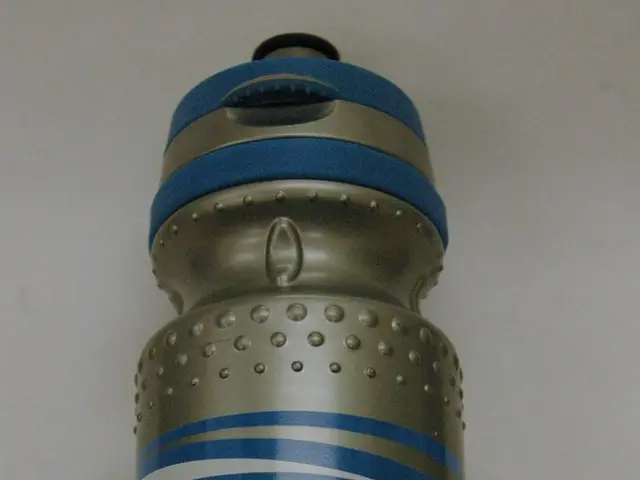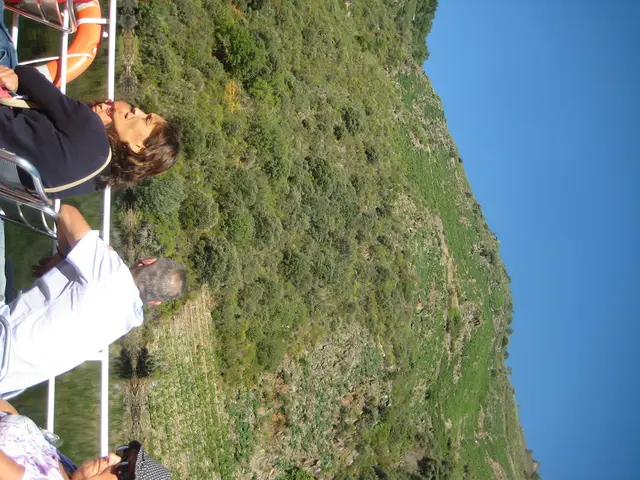eleven unusual strategies animals employ to evade predation
An Unconventional Guide to Animal Survival: The Natural World's Devious Tricks and Clever Gambits
The theater of the wild is an ever-evolving spectacle, where every creature dances an intricate ballet of predator and prey. The stakes are often high, with survival hinging on outwitting and outmaneuvering the hunter. Here is a delightful collection of nature's most bizarre and awe-inspiring tactics, employed by animals to evade the relentless grasp of their predators. Let's delve into the hidden exploits of the animal kingdom, a furtive realm where survival sometimes means bluffing and outright trickery.
Faking Death as a Last Resort: Thanatosis
One of nature's more peculiar survival strategies is the "thanatosis" tactic, exhibited by the opossum and certain insects. When confronted by danger, these creatures flop about haplessly, feigning death, rendering themselves an unappetizing meal. The opossum, for instance, secretes a fetid fluid to further enhance the illusion, making it a challenge to swallow.
Masters of Illusion: Camouflage and Mimicry
Nature's art of blending in, camouflage, is showcased by the chameleon's ability to adapt its color to the surrounding environment. This seemingly effortless transformation creates a Kunstkammer of shifting hues, one moment blending into the foliage, the next disguising itself as an anthill. Mimicry, a more cunning form of deceit, is exemplified by the harmless hoverfly, which resembles a wasp, a stealthy ploy aimed at deterring predators.
A Poisonous Appetite: Toxins and Warfare
When discretion fails, some creatures resort to chemical warfare, exhibiting a spectrum of poisonous adaptations. The vibrant and tiny poison dart frog carries enough venom to fell several predators, while the bombardier beetle ejects a noxious, smoky discharge to drive off attackers. It's an arms race of sorts, leading to an ever-evolving arms race of chemical defenses and countermeasures.
The Art of Self-Sacrifice: Shedding Body Parts
When regular defenses prove inadequate, some animals take the ultimate gamble, shedding body parts to escape. Lizards and certain crab species have perfected this art of autotomy, where limbs or tails are deliberately detached to create a diversion or to facilitate a swift escape. The lost appendage, replete with muscles and nerves, may continue to twitch even after detachment, further complicating matters for the pursuing predator.
Protect Yourself with a Puffy Shield: Inflation
The pufferfish and the frilled lizard are aptly named, both creatures using an ingenious tactic of inflating their bodies to deter predators. When threatened, they draw in water or air, expanding to an imposing size, much like inflating a floatie, rendering themselves an unpalatable and indigestible meal. It's a ruse that, if successful, can save these animals from the jaws of their would-be pursuers.
Building a Subterranean Fortress: Burrowing Underground
Some animals, like the naked mole-rat and the desert tortoise, prefer a more subterranean existence, burrowing underground to evade predators and extreme temperatures. The mole-rat, for instance, dwells in a complex network of tunnels, creating a hidden refuge that offers both protection and ventilation, while the tortoise's burrow allows it to retreat beneath the scorching sands of the desert, safely away from the relentless gaze of predators.
Setting Diversions: Creating Decoys
When all else fails, some animals resort to ruses to protect their young. The killdeer, for example, executes a calculated risk, feigning injury to lure predators away from their nests. This self-sacrificial behavior, the "broken-wing act," ensures the survival of their chicks, by creating a diversion and diverting the focus away from the vulnerable eggs. It's a cunning maneuver, akin to setting up a smokescreen to obscure the real target.
A Stinky Defense Mechanism: Releasing Odors
When foul play is necessary, some animals employ a fearsomely effective defense mechanism, releasing foul-smelling chemicals to deter predators. Skunks are perhaps the most infamous participants in this unpleasant dance, while the bombardier beetle uses a combination of odor and heat to ward off attackers, effectively setting off an aromatic stink bomb.
Armor Up: Physical Defenses
Some animals rely on physical defenses to keep predators at bay. The armadillo, for instance, boasts a formidable shell, which it can curl into, forming an impenetrable armor. Similarly, the pangolin protects itself using spiky scales, rolling into a tight ball when threatened. It's like donning a suit of medieval armor, making the wearer virtually indomitable.
The Power of Numbers: Safety in Numbers
Safety comes in numbers, a strategy utilized by many animals to increase their chances of survival. Herds of zebras confuse predators by their intricate, striped pattern, while schools of fish swimming in synchronized formations deter predators by camouflage. By sticking together, these animals create a collective defense, reducing the risk for each individual.
Imitating Dangerous Creatures: Mimicry
To elude their enemies, some animals have evolved to mimic the appearance and behavior of more dangerous creatures. The harmless milk snake, for example, bears a striking resemblance to the venomous coral snake, deterring predators who mistake it for the more deadly species. This form of mimicry, known as Batesian mimicry, is an astute ruse, akin to donning a costume to avoid detection or intimidate potential threats.
In conclusion, the wild is a realm of endless surprises and ingenious adaptations, where animals use their quick wits and resourcefulness to survive and evade their predators. From feigning death to setting diversions, each strategy is a testament to the ingenuity and adaptability of the animal kingdom, inviting us to marvel at the whispered secrets of nature, as it plots and wheedles its way through the great game of survival.
By Maria Faith Saligumba
Enrichment Data:
Overall:
The natural world is laden with fascinating survival tactics that animals employ to survive and thrive in various environments. Here are some unique and intriguing examples:
Unique Survival Tactics
Camouflage and Mimicry
- Chameleon: These reptiles possess specialized cells that change the color and texture of their skin in response to their surroundings, aiding in predator avoidance and temperature regulation.
- Leaf Litter Hopper: This insect exhibits both camouflage and mimicry by resembling a dead leaf and blending in with debris on the forest floor.
- Giraffe Weevil: This weevil resembles a thorn, mimicking the appearance of the acacia tree, deterring predators from grasping it.
Bizarre Adaptations
- Regeneration: Some animals, such as starfish and axolotls, possess the ability to regenerate various body parts, such as limbs and internal organs.
- Self-Amputating Earthworms: Certain earthworm species can self-amputate their front ends to evade predators, growing a new head from the remaining segment.
- Wings with a Twist: The horned African viper uses its scales to create a crease in its neck region, causing its tail to curl and resemble a baby viper, deterring predators who would otherwise see the horned viper as a worthy meal.
Behavioral Adaptations
- Stick-Tight Burrowing: The leafcutter ant can construct an impenetrable tunnel network with walls made of its own harvested leaves, creating a hidden fortress away from predators.
- Bamboo-Shoot Replication: The bamboo rat can regenerate above-ground stems to grow new bamboo shoots, providing itself with ample food sources and shelter.
- Moon-navigation: The echymipera papuana, or long-nosed bandicoot, uses the moon's position to help it find food at night, ensuring it is well-fed during resource-scarce periods.
Extreme Camouflage
- Axolotl's Color-changing Skin: These aquatic salamanders can change the color of their skin to blend into their surroundings, helping them remain hidden from potential predators.
- Fleas' Jumping Behavior: Fleas can jump up to 350 times their body length, making them difficult for predators, like birds and cats, to capture.
Collective Behavior
- Ant Bridges and Rafts: Certain species of ants, like the army ant, can link their bodies to form bridges and rafts, facilitating movement across obstacles and providing a means of collective transportation.
- Termite Fungus Farming: Termites cultivate fungi in their nests to break down wood, providing them with a steady food source. This mutually beneficial relationship allows termites to thrive in habitats where other insects may struggle to find sustenance.
These examples illustrate the remarkable diversity and creativity of animal survival strategies, showcasing how different species adapt to their environments to survive and thrive. From camouflage and mimicry to extreme camouflage and collective behavior, the animal world is a testament to the ingenuity and resilience of life on Earth.
- Insects, such as the leaf litter hopper, employ camouflage and mimicry by blending in with their surroundings, resembling dead leaves and debris.
- For protection, the pufferfish and frilled lizard inflate their bodies like inflatable floats to deter predators and make themselves unpalatable.
- In the realm of fashion-and-beauty, the harmless hoverfly mimics the appearance of a wasp to deter predators, showcasing the cunning art of mimicry.
- In the home-and-garden segment, the armadillo sports a formidable shell, providing it with armor-like protection against predators.
- When it comes to relationships, the killdeer feigns injury to divert predators away from their nests, employing a calculated strategy of creating diversions.






